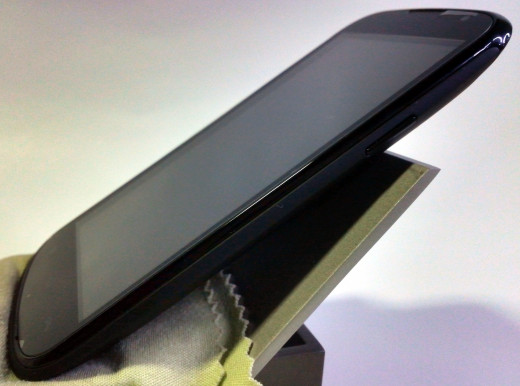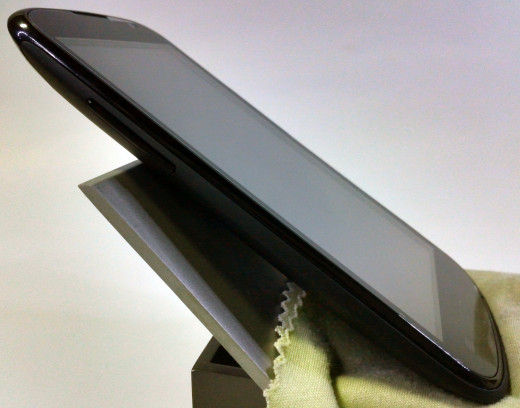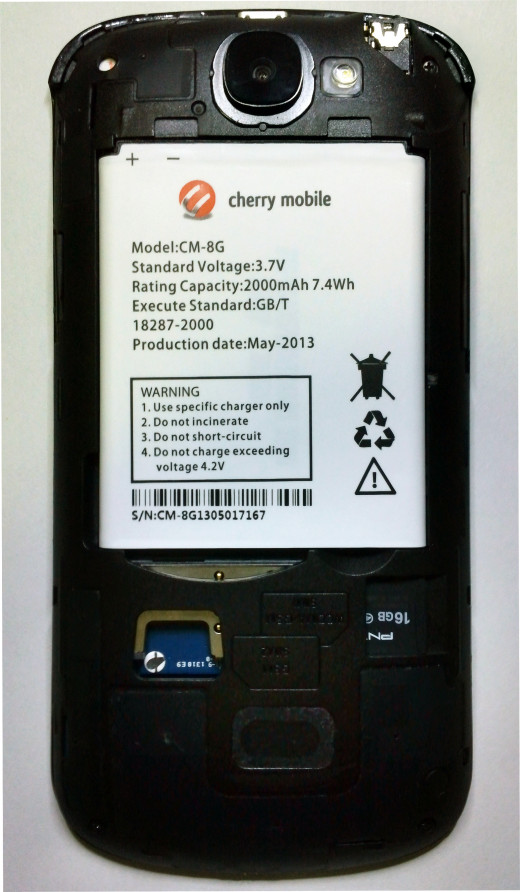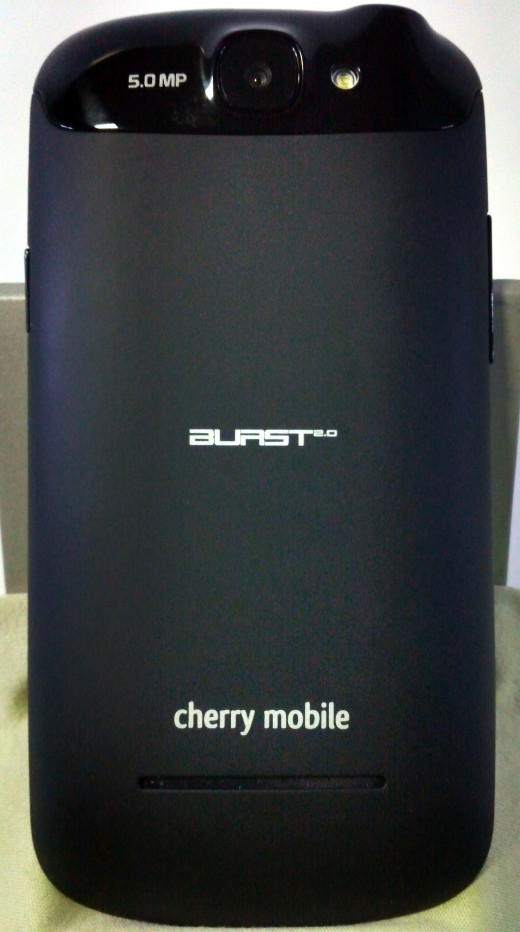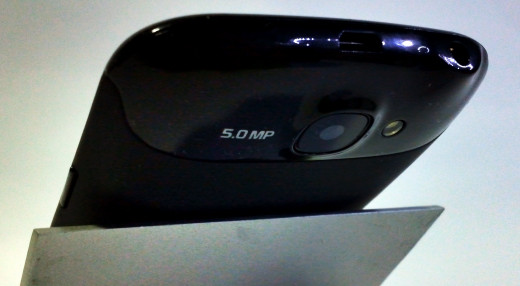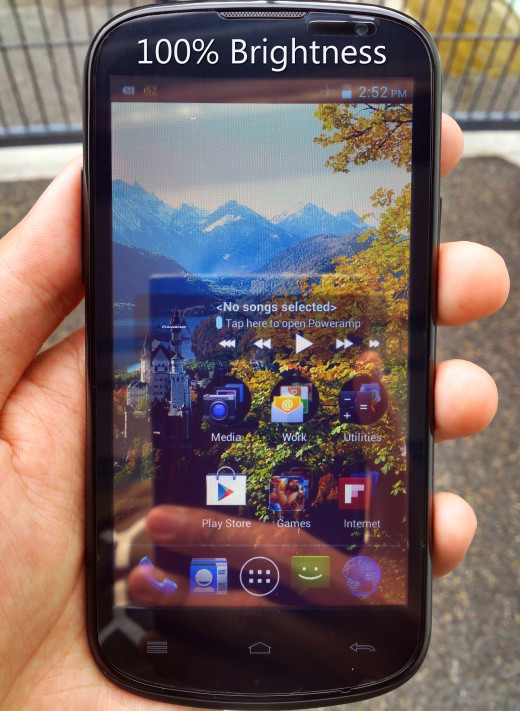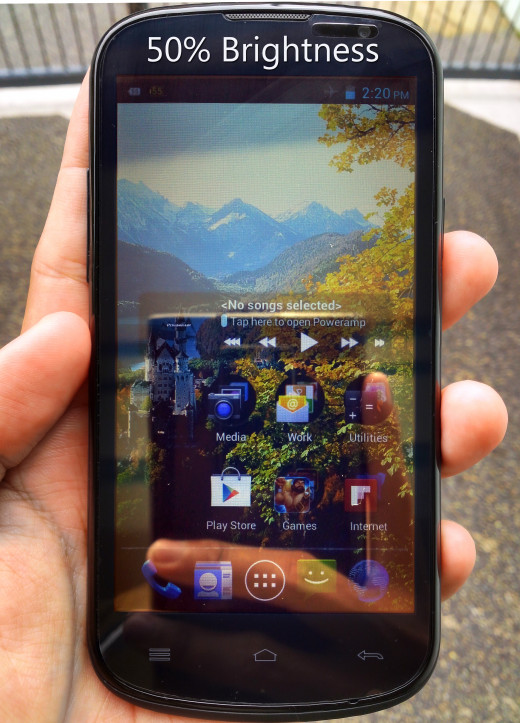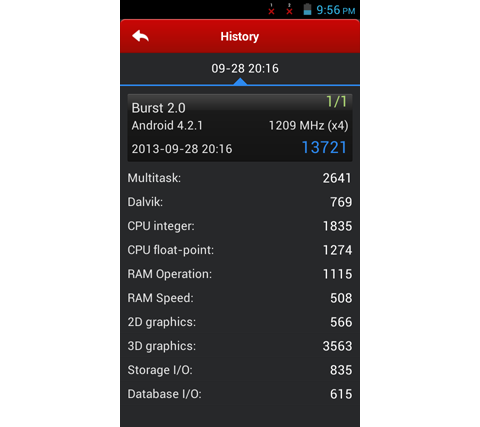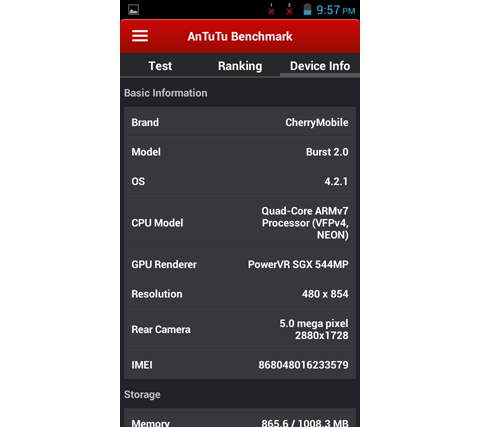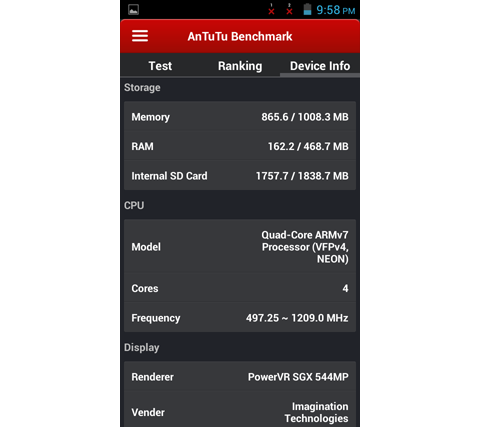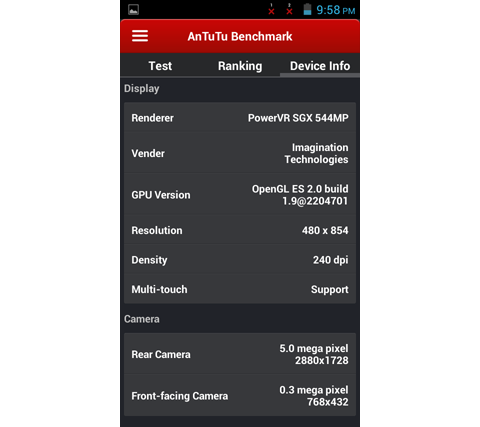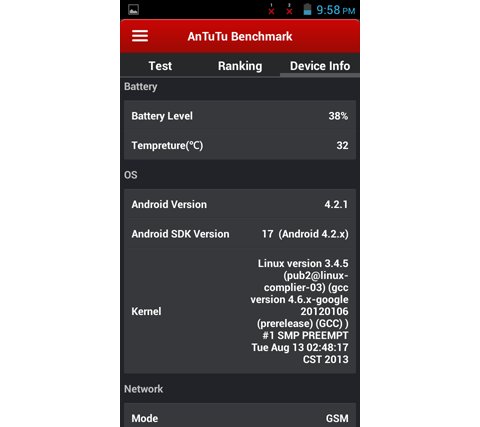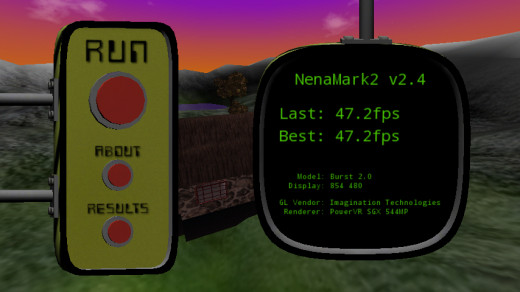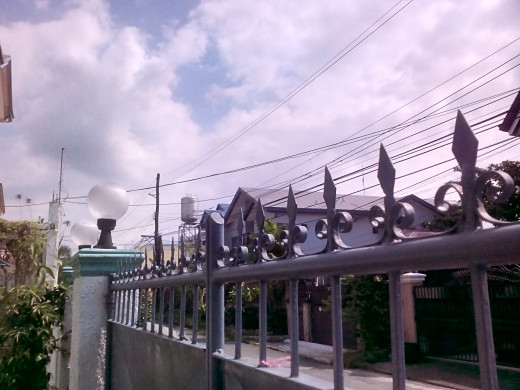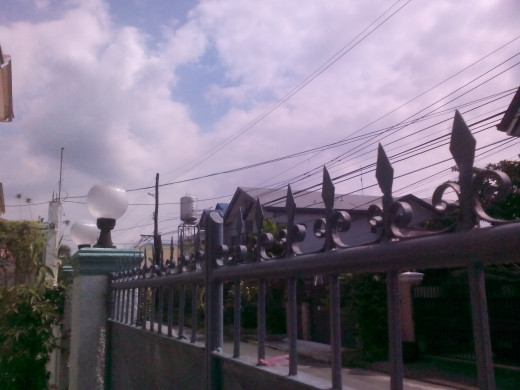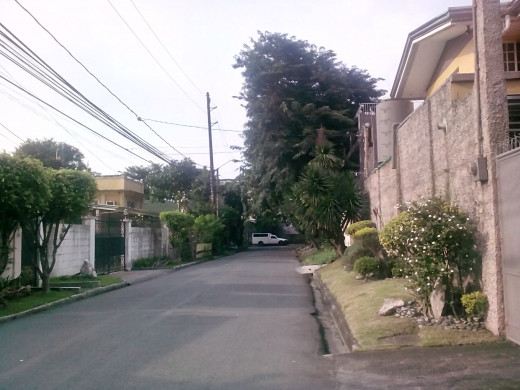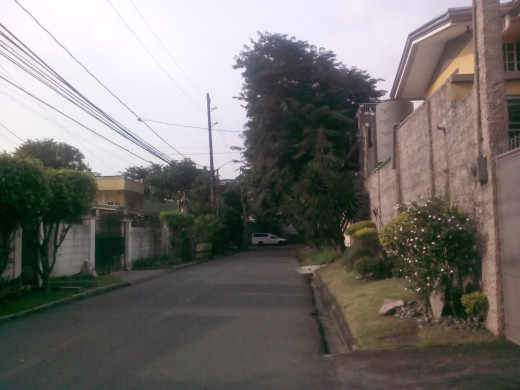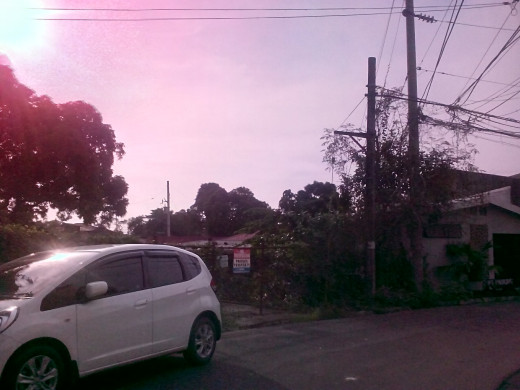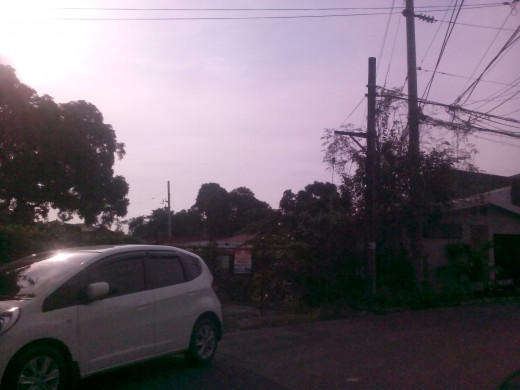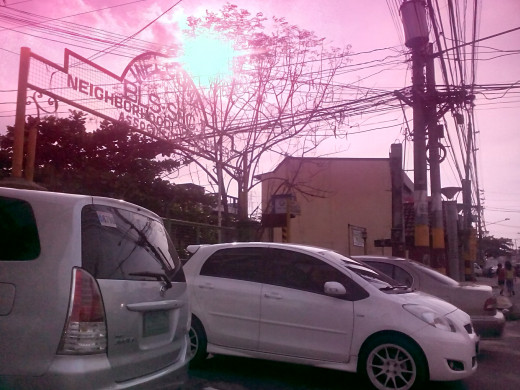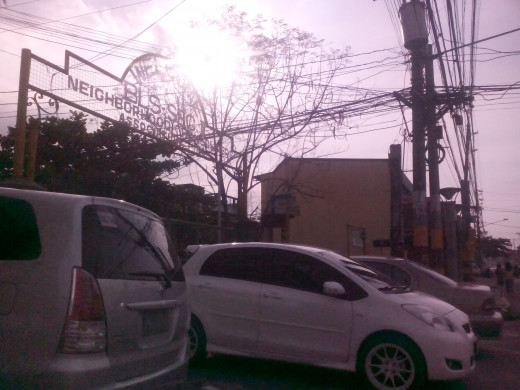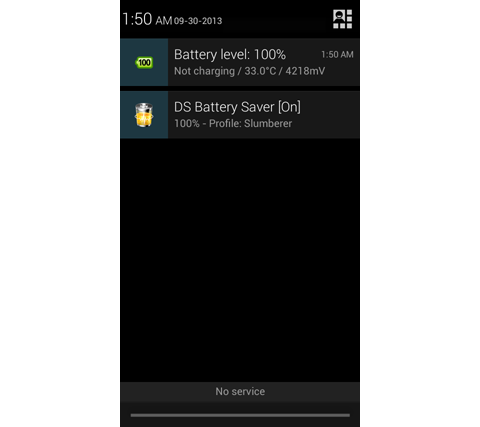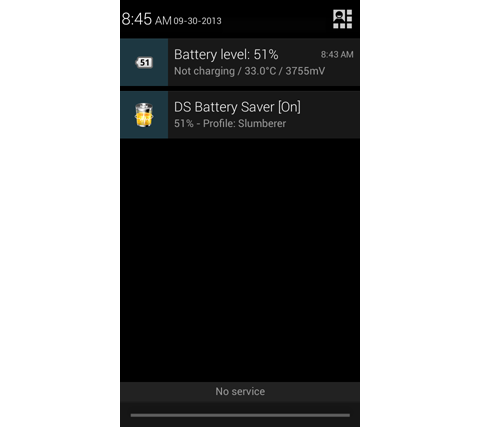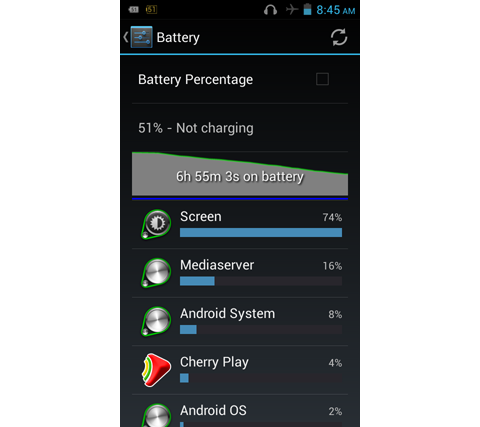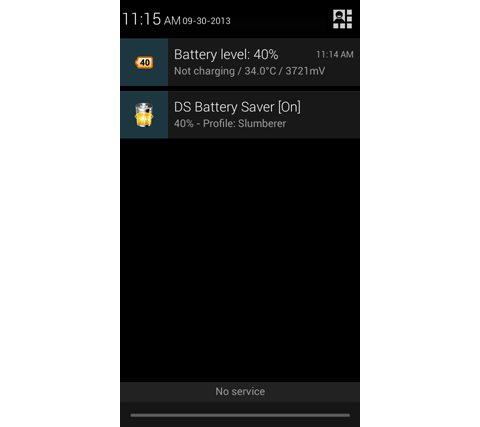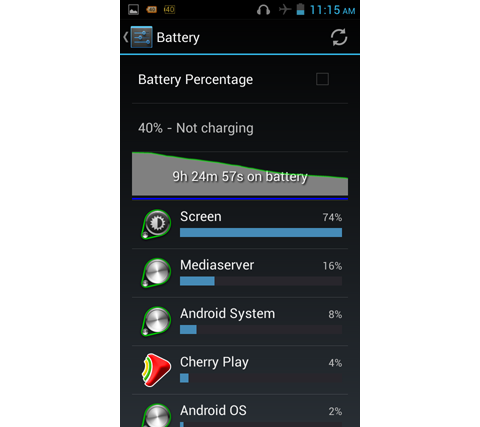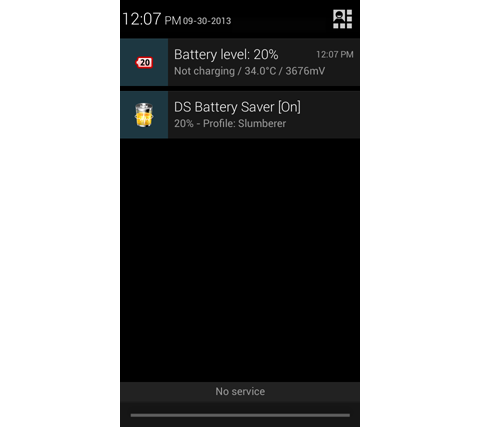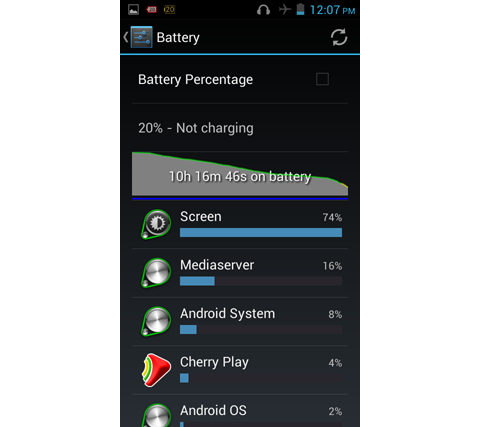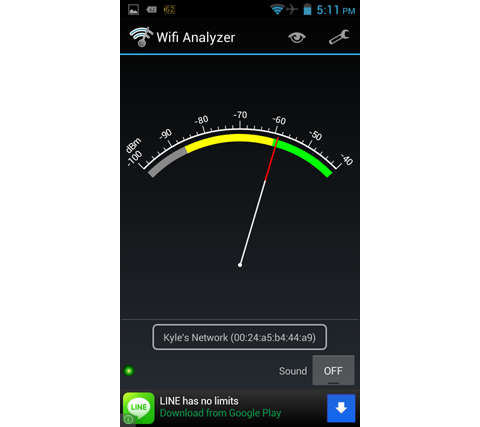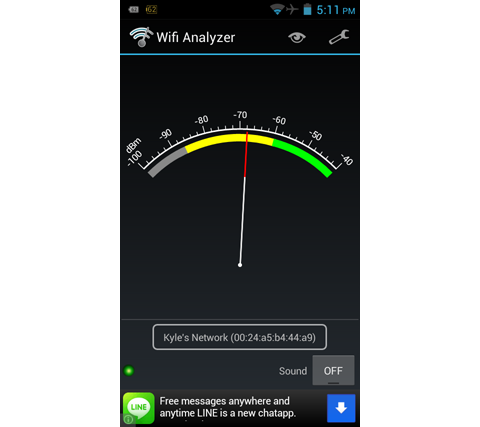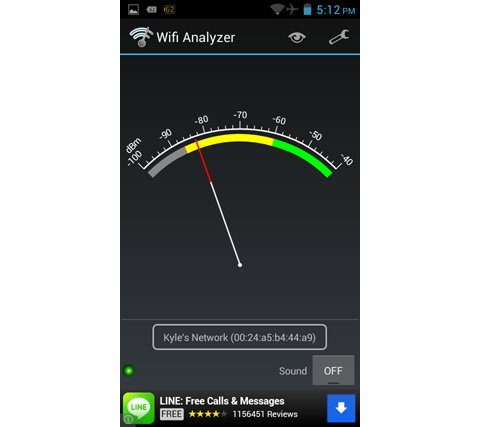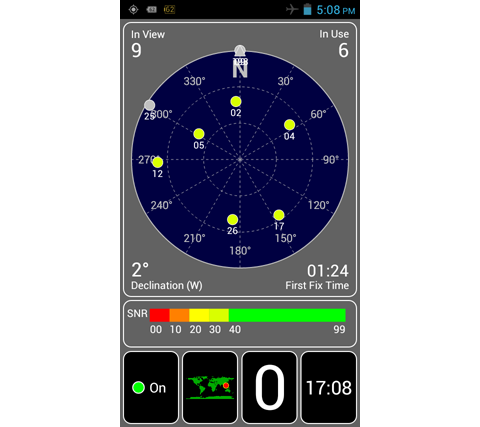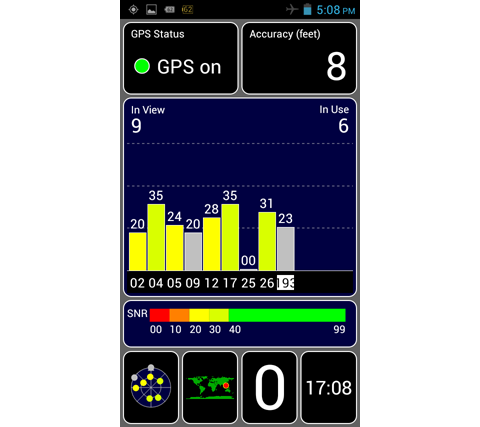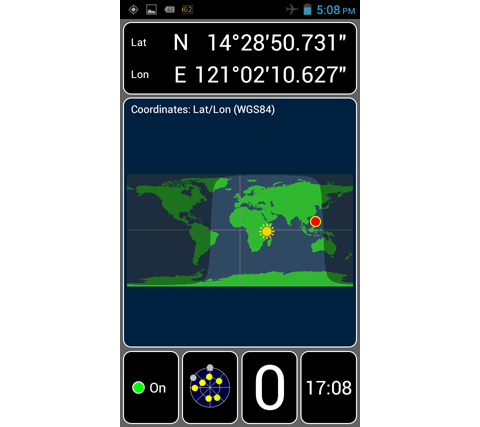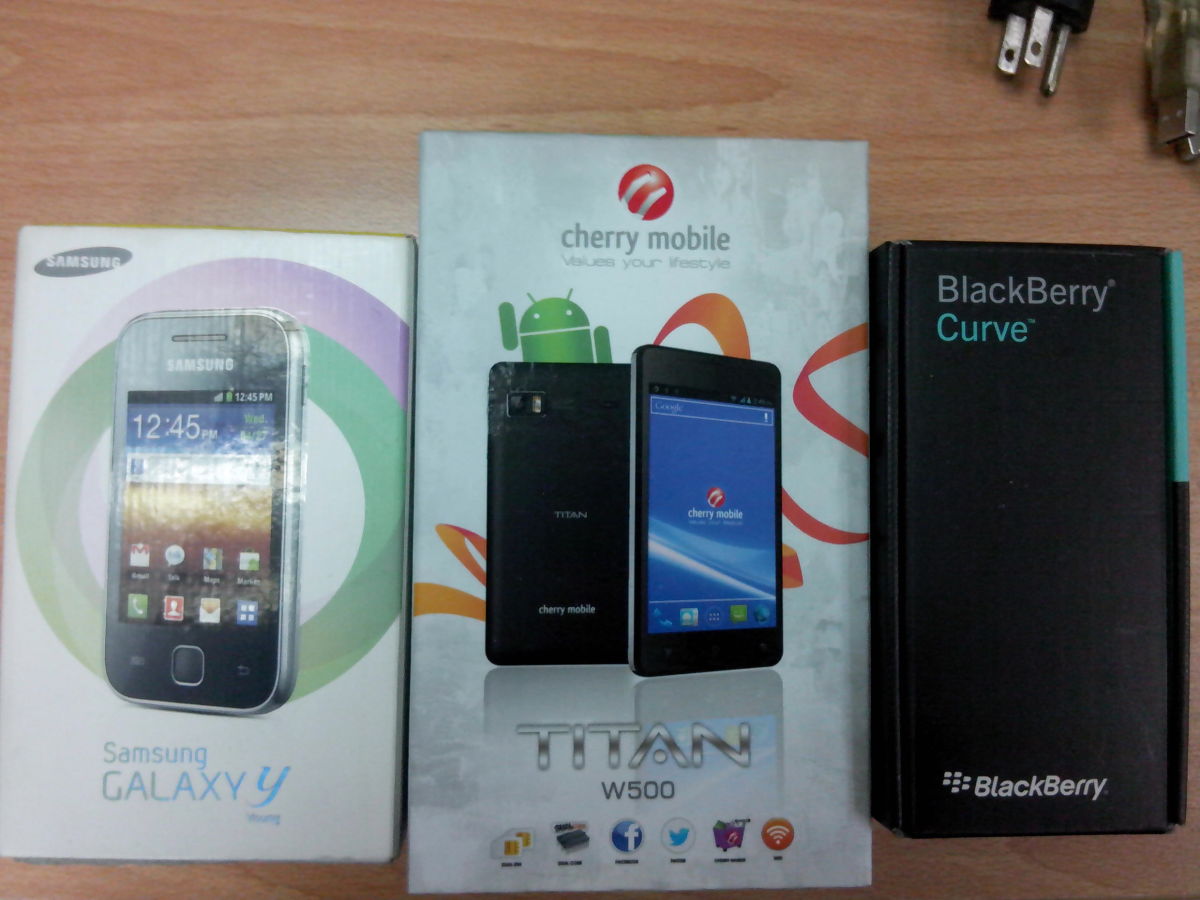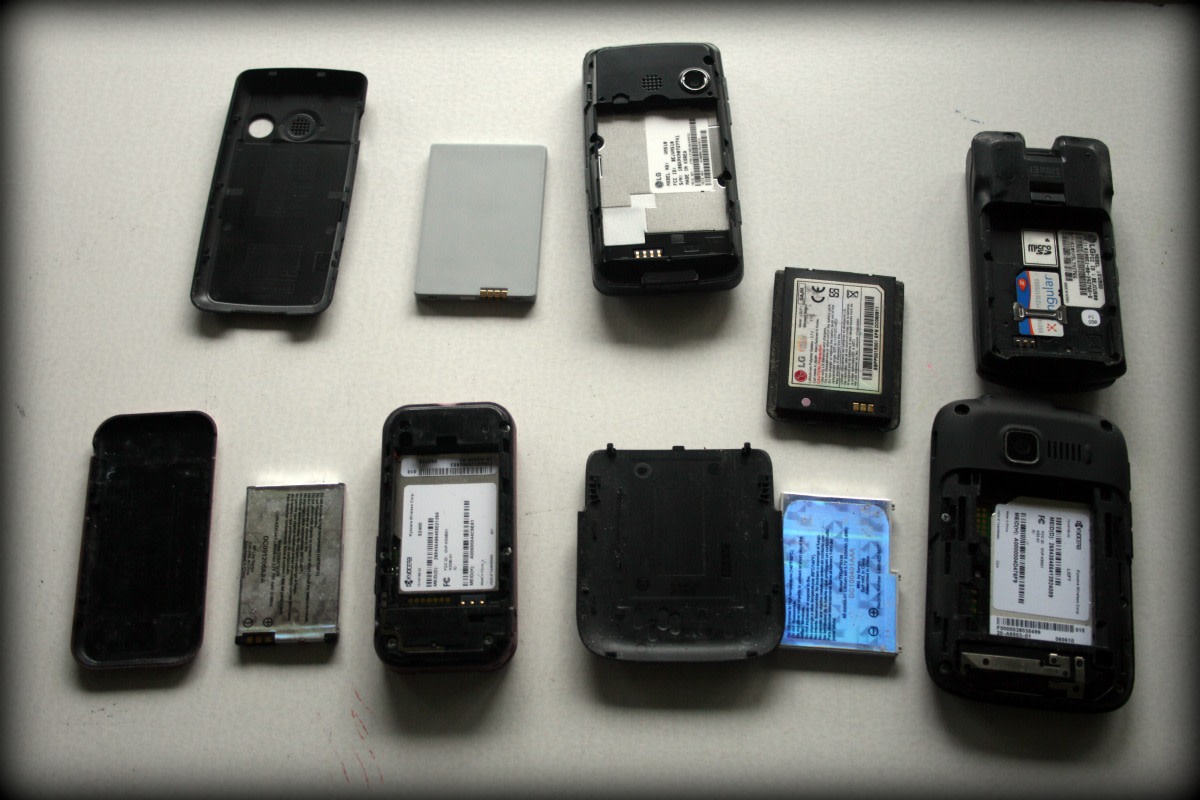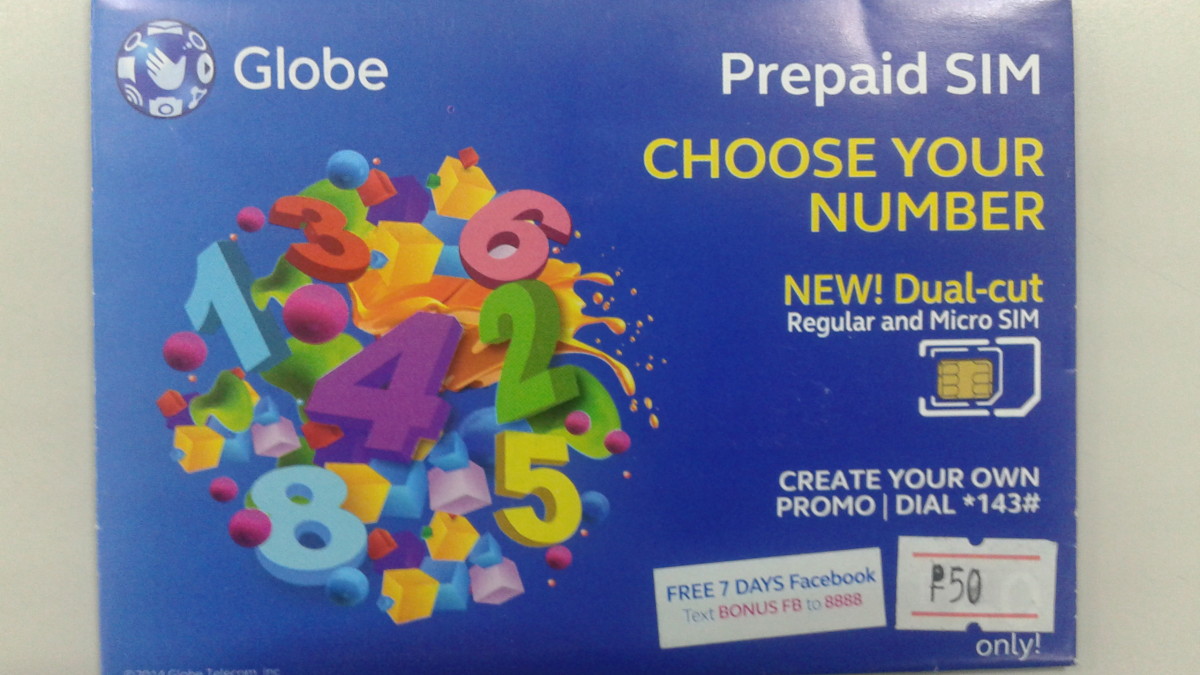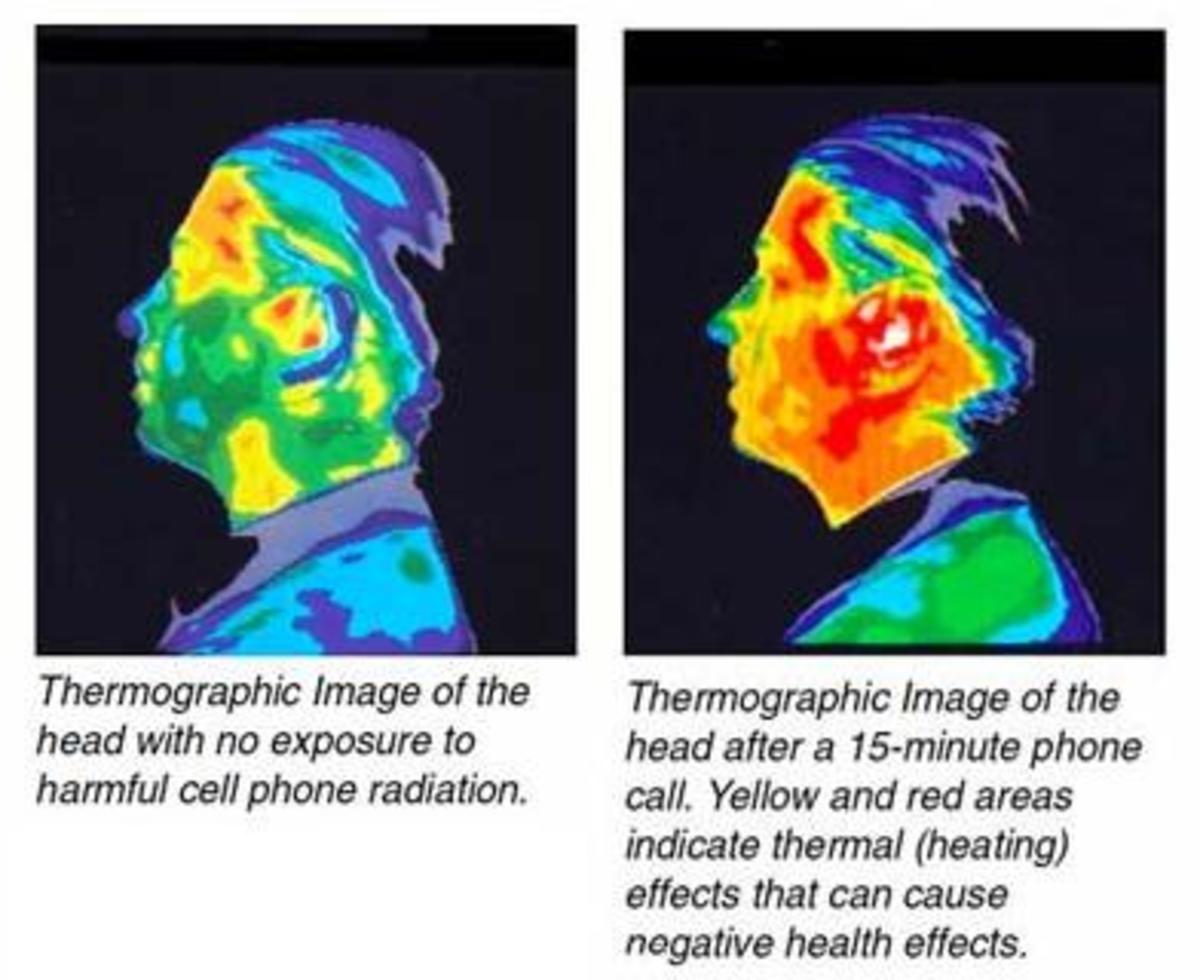Cherry Mobile Burst 2.0 Review

Choices, choices
One of the off-putting things about Cherry Mobile is that their strategy of "throw everything on the wall and see what sticks" instills buyer's remorse. They're even worse than Samsung in this regard, and combined with the shorter life cycle of devices from local phone brands, Cherry Mobile tends to release new devices almost on a month per month basis.
This time though, it's almost one year since the release of the Cherry Mobile Flare which had a game-changing price of 3,999 Php. However, the local phone brand scene has changed considerably since then and you have more offerings, more choices than ever. To ensure a tight lid, Cherry Mobile has not only released a successor to the Flare, but also threw in a few others for good measure. You basically have the Flare 2.0 which is identical to the Flare 1.0, but with an MSM8225Q processor (up from the old MSM8225), the Flare 2X which also has the MSM8225Q but with 1 GB of RAM and an 8 megapixel camera, the Burst 2.0 which is 4.5" but has an MTK6589 processor. There's also the Apollo which packs a 4.5" 720p IPS screen, a 12 megapixel camera, 1 GB of RAM and the MediaTek MTK6589, but competes in a different price bracket with its 6,999 Php price tag.
This sounded like a recipe for cannibalization with the Flare 2.0, Flare 2X and Burst 2.0 in the same price bracket as they cost 3,999 Php, 4,999 Php and 4,699 Php respectively. Since the Burst 2.0 had the superior processor, it's the one I choose to determine if it will make the Flare 2.0 and Flare 2X obsolete as the spec sheet would imply.
Design and Build Quality
The design of the Cherry Mobile Burst 2.0 is similar to the old Burst 1.0. The general shape of the phone resembles that of a pebble and not surprisingly, it does look like one of Motorola's older phones, the PEBL. Up front, the design is along the lines of Google's Nexus phones, complete with the matching icons on LED-backlit capacitive buttons at the bottom although Nexus devices use on-screen keys. The speaker grill is integrated as a slit near the top of the phone, giving it a clean, minimalist look.
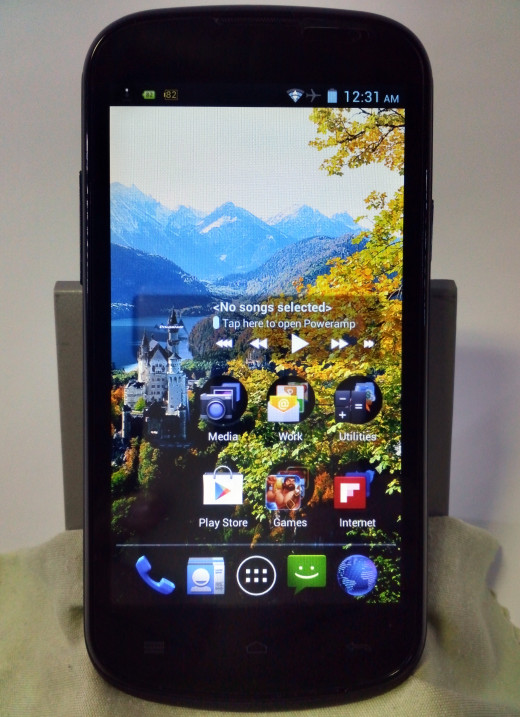

The Burst 2.0 on paper looks thick, with dimensions of 136 x 67 x 11.95 mm. But the 11.95 mm is measured at its thickest point and the Burst 2.0 tapers all around onto its side and you get a this curved handle for your palm. The phone itself looks curved, much like a Google Nexus phone. Combined with the rubbery matte back cover which provides further grip, it offers great ergonomics and doesn't feel unwieldy. It's feels natural to hold. The placement of the volume and power buttons are ideal too, with a soft and audible "click" when pressed.
The entire construction is plastic, so it does tend to look cheap especially with the glossy plastic at the top portion of the back cover. However, this is expected at these price brackets. The phone feels good in hand not just because of the great ergonomics, but also the overall heft. It doesn't feel hollow and the plastics aren't too thin, and the 132 g of weight feels evenly distributed.



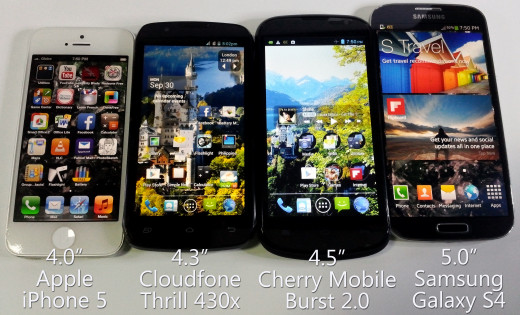
I do have a bit of a problem though with the back cover. I found it very hard to remove and should be done carefully unless you risk breaking it through sheer prying force. The problem with the back cover's design is that it also covers the sides of the phone, so both volume and power controls are also part of the back cover. The bottom side of the phone that tapers to its side also acts as a clipping area for the back cover... and the opening for the back cover is found on the top side. When you try to remove the back cover and the phone is standing upright, you also exert force on the bottom of the phone, making the back cover even harder to remove.



The Cherry Mobile Burst 2.0 comes preinstalled with a screen protector out of the box.
Here is a checklist of what comes inside the box:
- 1x Cherry Mobile Burst 2.0
- 1x 2000 mAh battery
- 1x 800 mA charger
- 1x USB cable
- 1x Headset
- 1x User's manual
- 1x Warranty card

Screen
The Cherry Mobile Burst 2.0 is equipped with a 4.5" FWVGA (854x480) screen that supports 5 point multitouch. Given the relatively low price of the Burst 2.0, they were only able to stick in a TN panel which means there would be one or two bad viewing angles. Fortunately, the TN panel is of higher quality and only the top side viewing angle is bad.
Here are some shots of the Burst 2.0's screen demonstrating viewing angles:
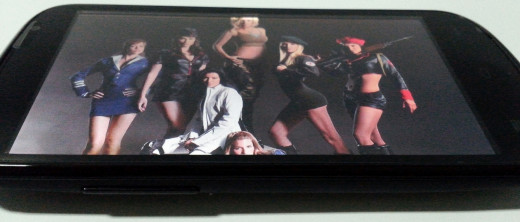
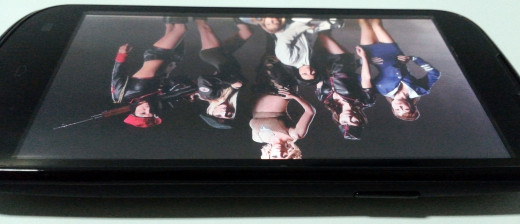
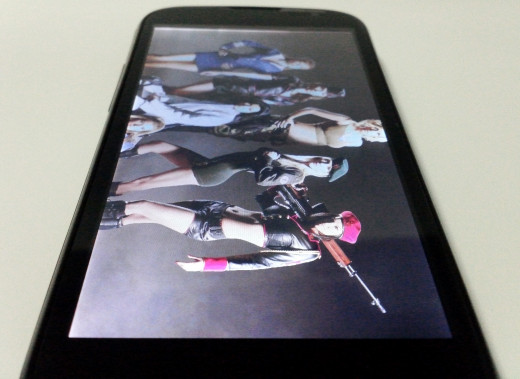
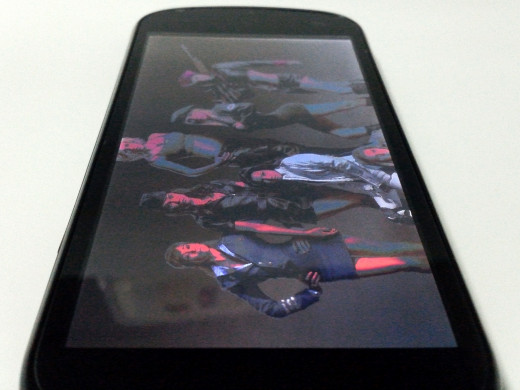
While an OGS screen is not expected given the use of TN panel, the glass used on the Burst 2.0 bears characteristics similar to the Nokia 'ClearBlack' displays on the last of Nokia's Symbian phones. While there is still a gap between the panel and the glass, the light transmission on the Burst 2.0 is good and the sunlight legibility is even better. The glass manages to absorb instead of diffuse soft, natural light which would otherwise be very reflective compared to artificial lighting. The pictures don't do the screen any justice in sunlight. Even at just 50% screen brightness, the screen remains legible under direct sunlight.


The display's characteristics is similar to the one on the Arc Mobile Nitro 450QD, but more refined. Backlight bleeding is minimal and the polarizer filter on the 'ClearBlack'-like glass extends contrast and brightness levels to near-IPS levels and there is also an impression of extended color gamut. Whites do look slightly blue due to the polarizer filter. The color temperature is slightly cold, but hue and gamma is almost spot on, with color contrast and saturation a bit on the lower side for a more natural looking image. Overall though, color accuracy is exceptional for a TN panel.







The 4.5" qHD TN screen on the Arc Mobile Nitro 450QD is arguably sharper, but I prefer the Burst 2.0's screen better. The Burst 2.0's screen is calibrated nicely out of the box and the 'ClearBlack'-like glass makes it easy to enjoy in any lighting environment. You can mistake it for an IPS screen until you see the nasty top side viewing angle. Even viewed directly at the center on landscape, the top side viewing angle gives about a 10 or 20 degree leeway before "inverting colors" as most would describe it. That means your left and right eye won't have to view two different levels of luminosity when you view the screen in landscape mode. The most common complaint with TN screens when viewed in landscape orientation is that the left or right eye sees a "darker" and "lighter" version of the same image, or vice versa, and when the brain tries to resolve it, it causes headaches. You won't have to suffer this on the Burst 2.0.




FWVGA (854x480) and WVGA (800x480) resolution is low by today's standards. Although to be fair, even qHD resolution is rare at these prices with the Nitro 450QD being the cheapest to have a qHD screen as of this writing. Viewing desktop webpages fully zoomed out is possible, but text can be tiny even if you increase the text scaling on your browser, which I do. Personally, the minimum screen resolution these days for comfortable viewing of desktop webpages fully zoomed out is qHD (960x540). It's nice not having to zoom in and out just to read something on a page.
As I've already said though, I'd still choose the screen on the Burst 2.0 hands down as sharpness isn't everything. I normally give a thumbs down on screens that use TN panels (and I did put it as a 'con' on the Nitro 450QD review summary), but the TN screen on the Burst 2.0 is probably the best TN screen I've seen on a mobile phone.
Performance
We've already been over the performance numbers of the MediaTek MTK6589 in my previous three reviews (MyPhone A919i, Arc Mobile Nitro 450QD, Arc Mobile Memo). The MTK6589 has four Cortex A7 cores at 1.2 Ghz and has PowerVR SGX544MP graphics at 286 Mhz. It is also manufactured at 28 nm meaning it is also more efficient than most Cortex A9 and A5-based SOCs like the MTK6577 and Qualcomm MSM8225 and MSM8225Q which are manufactured at 40 and 45 nm respectively.






However, there is one small difference on the Cherry Mobile Burst 2.0. It actually has the MTK6589M. The most notable difference between the MTK6589 and the MTK6589M is that the PowerVR SGX544MP graphics are downclocked to 156 Mhz, which can be evidenced by the Nenamark 2 scores where the Burst 2.0 only scores in the 47 FPS range while the Arc Mobile Nitro 450QD and Memo score in the 53 FPS range. This may look bad at first glance but when you actually take into account that the Burst 2.0 only has a FWVGA (854x480) screen that amounts to a total of 409,920 pixels, you'll realize that it's just the right balance of performance and power consumption. The SGX544MP at 286 Mhz would be overkill for WVGA or FWVGA resolution, which is considered low these days. That's the equivalent of fitting a small Toyota Vios with turbocharged 2.0L engine. The SGX544MP at 286 Mhz is recommended for use on 720p screens and the SGX544MP at 357 Mhz (found on the MTK6589T) is recommended for use on 1080p screens.
Length
| Width
| No. of pixels
| Relative pixel amount
| |
|---|---|---|---|---|
QVGA
| 320
| 240
| 76,800
| 18.74%
|
HVGA
| 480
| 320
| 153,600
| 37.47%
|
WVGA
| 800
| 480
| 384,000
| 93.68%
|
FWVGA
| 854
| 480
| 409,920
| 100%
|
qHD
| 960
| 540
| 518,400
| 126.46%
|
720p
| 1280
| 720
| 921,600
| 224.82%
|
1080p
| 1920
| 1080
| 2,073,600
| 505.85%
|
The lower GPU clocks translate not only to lower power draw, but also lower temperatures while gaming, so the phone and the battery doesn't get as hot -- and we all know heat is the main enemy of the battery. In all, the lowered GPU clocks on the MTK6589M combined with the Burst 2.0's big battery translates into longer gaming time. When I played Gameloft's Modern Combat 4 for almost an hour on the Burst 2.0 on lowest brightness setting, I only lost around 20% battery life. That's exceptional stamina for gaming for a phone this size. Most smartphones in this class would run dry after 2 hours of playing a game as graphically demanding as Modern Combat 4.
Performance on the Burst 2.0 as a whole is good and will offer the best gaming performance in this price bracket as of this writing. You cannot expect Qualcomm Snapdragon MSM8225Q/MSM8625Q quad cores to perform anywhere near as fast due to their very old Adreno 203 graphics and weaker Cortex A5 cores. The MSM8225Q/MSM8625Q can't even play 1080p H.264 videos properly. The aforementioned Snapdragon 200 quad core parts are found on newer phones in the same price bracket as the Burst 2.0, such as the Cherry Mobile Flare 2.0 and Flare 2X. As you can see from the video below, the Burst 2.0 is no slouch as graphically demanding games smoothly.
Like on the Arc Mobile Nitro 450QD, one thing that may concern you when looking at the spec sheet of the Burst 2.0 is the 512 MB of RAM. Most MTK6589 phones are paired with at least 1 GB of RAM. However, this should not discourage you because 512 MB of RAM is more than adequate for any application on Android at the moment.
If you look at the Android application lifecycle, applications aren't immediately destroyed unless explicitly called by a garbage collector, which is usually a task killer application or by Android itself when another application with higher priority requires RAM. When you leave the application (i.e. App A) you are currently running and run another application (i.e. App B), the new application checks for available RAM. If the available RAM is insufficient to accommodate both applications, App A is stopped and its state is cached into a persistent storage, in this case your internal memory, then App B is put into the foreground. When you attempt to go back to App A, Android loads the previous state of that application into the RAM. Depending on how the application handles save states, you may feel as if that application was running in the background the whole time or the application will reload and attempt to restore what you were previously doing. Cleverly made applications will seem like they never left the background, creating the illusion of multitasking.
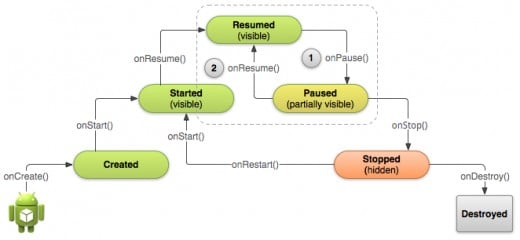
Android has gone a long way and allocates RAM even more efficiently now and there are no need for task killers, regardless of what most people say. In fact, forcibly killing tasks is more destructive as it fragments your RAM the more you do it, which can lead to lowered I/O performance over time until the system is restarted. This means switching in and out of applications will be slower the more you forcibly kill applications.
1 or more GB of RAM gives you the luxury is true multitasking, that is, your applications reside in the RAM. Even then, only a handful of applications actually keep running in the background. Some still freeze their state even if they're stored in the RAM for quick access. At this point, the tangible benefits of having plenty of RAM on Android is that you are able to switch in and out of applications much faster because you are loading to and from the RAM, instead of having to load a saved state of an application and reinstating it again. In any case, RAM has little or nothing to do with which apps your phone can and can't run until such a time that RAM requirements become overblown -- but that won't happen any time soon even with RAM hungry applications like "HD games". As such, the 512 MB of RAM on the Burst 2.0 is a non-issue unless you demand a seamless multitasking experience.
Regardless, it's up to you to decide "how much multitasking" is enough for one's self. The video below demonstrates a series of multitasking activities on the Burst 2.0 such as browsing through several tabs of desktop sites and playing a 720p video in window mode at the same time.
Lastly, the MTK6589 is able to playback 1080p H.264 video without hiccups. Most 720p H.264 videos I've tested played with no problems using the hardware decoder, but some videos with specialized encoding (i.e. FASM) at 480p and 1080p displayed only a blank screen when using the hardware decoder. They played perfectly fine using the software decoder though. The video hardware accelerator on the Burst 2.0 must be missing some drivers as the MTK6589-based A919i was able to play the same videos using the hardware decoder. The Burst 2.0 is also fast enough to play even 1080p videos in windowed mode using an application like 'GPlayer' while you are doing other tasks such as typing a message or web browsing.
Below is the result of testing several HD videos on the Burst 2.0. MX Player was used for testing. Audio decoding is set to software as the hardware decoder on the MTK6589 cannot decode multi-channel audio.
1280x534 @ 24 FPS, AVC High Profile L4.1, with CABAC, 5 reference frames
| 1280x528 @ 24 FPS, AVC High Profile L4.1, with CABAC, 4 reference frames
| 1280x528 @ 24 FPS, AVC High Profile L4.1, with CABAC, 8 reference frames
| 1920x800 @ 24 FPS, AVC High Profile L4.0, with CABAC, 5 reference frames
| |
|---|---|---|---|---|
Video bitrate:
| 1362 Kbps
| 2270 Kbps
| 2911 Kbps
| 3703 Kbps
|
Audio:
| 448 Kbps, 6 channels AC-3
| 401 Kbps, 6 channels, AAC
| 395 Kbps, 6 channels, AAC
| 306 Kbps, 6 channels, AAC
|
Plays via hardware decoder:
| Yes
| Yes
| Yes
| No, black screen but audio plays
|
Plays via software decoder:
| Yes
| Yes
| Yes
| Yes
|
(HW) Has dropped frames:
| No
| No
| No
| No
|
(SW) Has dropped frames:
| No
| No
| No
| No
|
Camera
The Cherry Mobile Burst 2.0 is equipped with a 5 megapixel camera... then you take a shot with the camera and ask yourself: "Is this really a 5 megapixel camera?". While I could not verify what image sensor the Burst 2.0's camera has, I can safely say the actual sensor resolution is 2 megapixels given the amount of quantization artifacts at micro detail level. In my previous review of the Arc Mobile Memo, I said that interpolation isn't bad if it's implemented correctly. However, the Memo had a good Omnivision OV5647 sensor whereas the sensor on the Burst 2.0 is so bad that it's simply GIGO, or "garbage in, garbage out". There's just not enough to begin with or to salvage with post-processing and interpolation. Also, the camera on the Burst 2.0 is fixed focus, so no macro shots.
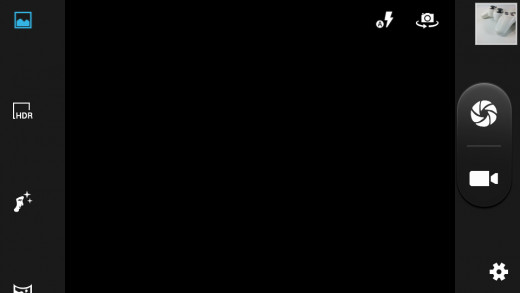
The camera UI and available camera features on the Burst 2.0 is virtually identical to that of the Arc Mobile Nitro 450QD, so I've decided to use the video of the Nitro 450QD instead below to stand in for the Burst 2.0.
The camera UI is stock Android 4.2 and there are a myriad of shooting modes available. There are also many manual controls in normal shot mode. You are able to adjust exposure (+/- 3 steps), color effect, scene, white balance, general image properties such as sharpness, hue, saturation, brightness and contrast. You can also adjust ISO to take better shots in low light although frankly it doesn't help much in the case of the Burst 2.0.There are no metering options though, but the default metering is center weighted and automatically switches to spot the moment you tap an area on the viewfinder. There is also an option to enable ZSD (zero shutter delay) which takes photos the moment you tap the shutter, but since the Burst 2.0 is already fixed focus, there's no need to enable ZSD. Aside from normal/manual and auto-scene detect mode, other shooting modes are present like HDR, panorama, multi-angle shot that allows you to shoot a subject from different angles, face beauty that automatically detects a face and auto-adjusts for a better looking image, smile shot that automatically snaps the shutter when a smiling face is detected, and EV bracket shot mode that generates three images of varying exposures.
Hmm... what's there to say about the image quality on the Burst 2.0's camera except a 3 megapixel Sony Ericsson K800i from 8 years ago will clobber it into submission? One, the light sensitivity of the sensor is low and there's plenty of noise. Taking decent shots in anything but good lighting is difficult. Two, the optics are of really low quality. The excessive hue when the sensor attempts to capture light in the high range of the light spectrum is just bad. That's like your typical VGA front facing camera. The white balance is "okay", but in every other measure you can think of it just does bad. Sharpness? Little to none. Dynamic range? Low. Contrast? Bad. Color saturation? Uhh... bland. Etc. etc. It's the equivalent of describing turd. How do you describe it? Just save yourselves the trouble and view my sample shots. The Burst 2.0 will still take better shots than most if not all featurephones (which are a dying breed) these days, but it's just bad for a smartphone or a "5 megapixel" camera at that. It's still a usable camera, but only as a last option.
Burst 2.0 Sample Shots (Good lighting)
Click thumbnail to view full-size







Burst 2.0 Sample Shots (Low light)
Click thumbnail to view full-size






Burst 2.0 Sample Shots (HDR comparison)
Click thumbnail to view full-size







Burst 2.0 Sample Shots (Panorama)
Click thumbnail to view full-size

The video recording on the Burst 2.0 is almost as bad. While the MTK6589 allows the Burst 2.0 to shoot 720p video at a very high bitrate of 29 Mbps, the limitation of the sensor means even the video's 1280x720 resolution frames are interpolated too. Again, GIGO. The resolved detail is very low as the quantization artifacts from the interpolation smudge any fine detail. The frame rates are smooth though despite the lack of image quality. You can also adjust metering on the fly by tapping on the desired area of the viewfinder while recording a video, just like in still shot mode. You can also enable EIS (electronic image stabilization) if your hands are shaky. Audio is encoded in stereo at 128 Kbps AAC. Video recording takes up roughly 200 MB per minute of footage on "Fine" setting. You can also settle for "High" setting for video which is also 720p at 30 FPS, but bitrate drops to 9 to 10 Mbps which is 1/3rd of the fine setting, or about 70 MB per minute of footage.
Below are video recording samples taken by the Cherry Mobile Burst 2.0:
Please watch the videos in 720p to see what the recordings actually look like.
Videos taken were set to "Fine".
Sample 1 (outdoor):
http://www.youtube.com/watch?v=vlhkX1KDDAI
Sample 2 (shaky):
http://www.youtube.com/watch?v=LVmP0WgE5-A
Sample 3 (low light):
http://www.youtube.com/watch?v=6djr3CAC52U
Here's the lowdown on the Cherry Mobile Burst 2.0's camera:
- Bad shots in almost any lighting condition, they're just usable at best
- Lack of auto focus means you cannot perform macro shots
- Lots of other camera options and features
- 720p video recording has very poor detail capture, although frame rates are smooth
Lastly, the front-facing camera is VGA and making video calls is advised in decent to good lighting.
Battery
The Burst 2.0 is equipped with removable a 2000 mAh battery. This capacity matches that of other 5.0" phones like the MyPhone A919i and Cherry Mobile Cosmos Z. The 2000 mAh battery paired with a TN panel (which draws less power than IPS), the FWVGA resolution and MTK6589M, the Burst 2.0 offers great stamina.
The usual battery test via looping video is still performed, despite it not telling the whole story. For the battery test via looping playback, the application used to play the video is MX Player. The following were the conditions during the test:
- Screen brightness: 4/15 of MX Player brightness setting or about 30% of Android brightness bar
- Volume: 13/13 of MX Player volume setting or 100% of Android volume bar, with earphones attached to the Burst 2.0
- MX Player-specific settings: H/W decoder used for video. S/W decoder used for audio
The following are the details of the video file used for playback:

Battery calibration was performed before the test was conducted.
Battery test
| |
|---|---|
Start of playback:
| 1:50 am / 100% / 4.218V
|
Checkpoint 1:
| 8:45 am / 51% / 3.755V
|
Checkpoint 2:
| 11:15 am / 40% / 3.721V
|
End of playback:
| 12:07 am / 20% / 3.676V
|
Total playback time:
| 10 hours 17 minutes
|
The total playback time is 10 hours 17 minutes though I have to say the percentage drain became higher starting from 40% downwards, even after calibration. Nevertheless, it isn't too steep as can be seen in the battery test drain stats (see screenshots related to the battery test below). and voltage readings appear to remain accurate the entire time.
Battery life in typical use scenarios have also been excellent. Both standby time and use time is stellar. Like I said in the performance section, the Burst 2.0 only managed to lose about 20% of battery while playing Modern Combat 4 on lowest screen brightness for almost an hour. That amounts to a little over 4 hours of gaming time. The radio is equally efficient too, draining only around 15% per hour of web browsing on lowest brightness. The Burst 2.0 will easily last a day of moderate use on higher brightness settings (>40% of brightness bar) or a day of heavy use of lower brightness settings (<25% of brightness bar). By moderate use, I refer to 1 hour of gaming, 2 hours of 3G web browsing and 30 minutes of talk time and several text messages.
Charging times for the Burst 2.0 are average. With the bundled charger that outputs 800mA or 0.8A, I was able to charge from 20% to 85% in around 1 hour 45 minutes while the phone is on standby. It takes another 30 to 45 minutes to charge it from 85% to full.








Audio quality
For the rating of audio quality, I will go by the following rubrics:
- Dynamic range - this determines how well the source is able to reproduce varying differences of sound, particularly their degree of quietness and loudness. How clearly a ringing of a cymbal and the boom of a drum is heard and how well-defined each is defined by how high the range is. Perceptibly, this governs the clarity of both low and high frequencies, and sound stage.
- Power output - this determines how much power the source is able to provide to your equipment (i.e. earphones and headphones). The better the power output of your source, the higher the resistance of the equipment you can use on your phone without suffering detail loss, in which event you will be forced to use an external amp. In my ratings, 4 stars defines that the phone is able to provide adequate power with minimal detail loss to equipment with a resistance of up to 64 ohms, provided that distortion is also 4 stars. Perceptibly, higher power output allows you to lower preamp in the equalizer for cleaner detail. It also governs bass impact.
- Stereo Crosstalk - this determines how much leakage or interference is occurring between the left and right audio channels. Lower stereo crosstalk means more accurate sound from their respective channels and less mixing. In my ratings, 4 stars defines a low enough stereo crosstalk to provide a soundstage that only suffer minimal distortion when several instruments play simultaneously. Perceptibly, a better stereo crosstalk rating provides less distortion in poorly mixed tracks and to a lesser degree, affects how wide and defined the sound stage is.
- Distortion - this determines how much power can be delivered by the source without altering the signal. In my ratings, a better distortion rating perceptibly means your phone can playback at higher volume without suffering detail loss through distortion. In my ratings, 4 stars defines that the phone is able to play at 9/10 of the volume bar with minimal detail loss.
- Noise - not to be confused with SNR (signal-to-noise ratio), noise in my rubrics simply defines how clean the signal is when the frequency is at rest, or perceptibly how much hissing there is when there is quietness. In my ratings, 4 stars defines that there is virtually no hissing when there is silence in the track during playback.
Here is how the Cherry Mobile Burst 2.0 does against phones I have or have reviewed before:
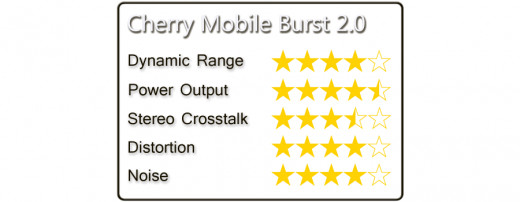

The Cherry Mobile Burst 2.0 has good audio quality and power output in particular is very good. Even full sized headphones up to 64 ohms resistance can be driven with little distortion and loss of detail. The output is clean overall, with strong bass impact and glistening highs, but can't help but notice slightly diminished stereo crosstalk in tracks where the channels are poorly mixed during recording. 7/10 or 8/10 of the volume bar with an IEM should be plenty loud for most people and the generous power output means you have additional leeway when it comes to tweaking the equalizer. Overall, the sound quality on the Burst 2.0 is more than good enough to replace most dedicated music players like the iPod and the output is clean enough to use with portable amps like the FiiO E6.
Lastly, the 3.5 mm port isn't CTIA-compliant, meaning headsets (earphones/headphones with an inline microphone) will not fully work. The left and right channel work properly with CTIA-compliant headsets like the Apple Earpods, but the inline mic won't. This is a shame considering the Arc Mobile Memo I previous reviewed had a CTIA-compliant 3.5 mm port, which IIRC, is a first among locally branded Android phones.
Other Stuff
Like any Android phone in this price range for that matter, there's only 4 GB of ROM. That's 1.80 GB of internal storage and 1 GB for applications. That's a total of around 2.8 GB usable memory. To bypass the tiny storage, you can easily use an application called FolderMount that moves the data to your external memory (your microSD card) and links it up with a dummy folder on the internal memory. You will basically pair a folder on your internal memory to a matching folder on your external memory that contains the actual data, so you fool Android into thinking the data is still on the internal memory. FolderMount requires root access, but it is very easy to root the Burst 2.0 or any MTK6589-based device on Android 4.1 and 4.2 for that matter.
Here are the steps to root the Cherry Mobile Burst 2.0:
1) If Developer Options are hidden, go to Settings > About Phone > tap on 'Build number' 10 times to show developer options.
2) Now, enable USB Debugging under Settings > Developer options
3) 3) Download and install the KingRoot APK on your Burst 2.0.
4) Open KingRoot and press the large green button until it shows a giant check mark confirming a successful root.
Call quality on the Burst 2.0 is good despite the lack of a secondary mic for noise cancellation, and with earpiece volume above average. The loudspeaker's volume is only above average, but does manage to be crackle free and clear even at maximum volume. There's also FM radio if you get bored of your playlist.
Wifi reception on the Burst 2.0 is above average. It is still able to pick up a signal 11 meters away from the router with two (2), 1 foot thick walls in between. Signal to noise ratio is good and should be more resistant to interference.



The Burst 2.0's GPS performance is very good for a MediaTek device, which translates to above average in comparison to other devices with a different SOC vendor. GPS in MediaTek devices tend to be so-so, so the Burst 2.0 does well. It took me 1 minute 24 seconds to get a lock stationary and under a clear sky without A-GPS enabled, and was able to lock in to 6 out of the 9 satellites. Subsequent locks take under 5 seconds which means you can expect the Burst 2.0 to quickly reacquire the GPS signal after exiting tunnels and such. Also, the Burst 2.0 does not have a magnetic sensor and you will not be able to use it as a compass offline.



Conclusion
The Cherry Mobile Burst 2.0 could have been a winner had it not been for its awful camera. It could have seriously made the Flare 2.0 and Flare 2X obsolete if the Burst 2.0 had a decent camera. I believe that part of a successful smartphone experience is that the experience should be at seamless and uniform, even if there are some areas that excel. However, while the Burst 2.0 does excel in many important areas such as screen quality, overall performance, battery stamina and ergonomics, it falls very short in one -- the camera. The camera is just terrible. They could have at least put the same camera as on the Cherry Mobile Flare 1.0, which is already considered so-so but considering its price many seem to be satisfied. Alas, the Burst 2.0 probably has the worst 5 megapixel camera I've seen yet. This is a big compromise. A hole in the smartphone experience of the Burst 2.0. Personally, a decent camera is integral to the part of the smartphone experience as smartphones are supposed to be a convergence device, and the Burst 2.0 falls way off the mark as other Androids in the same price range of the Burst 2.0 have superior cameras. Perhaps Cherry Mobile was aware of this deficiency to prevent it from cannibalizing sales of the Flare 2.0 and Flare 2X.
To be fair, the Burst 2.0 packs muscle that its quad core Qualcomm alternatives simply can't match. You put the Flare 2X with its Snapdragon 200 MSM8225Q with 1 GB of RAM next to the Burst 2.0, and the Burst 2.0 will seriously smoke the Flare 2X in any perceivable contest of speed. The Burst 2.0 also packs a great TN screen that's calibrated nicely out of the box and has a 'Nokia ClearBlack'-like glass. This is the best TN-based screen I've seen so far on an Android phone and I will mark it as a pro rather than a con. Lastly, the battery life on the Burst 2.0 is impressive. Probably best-in-class barring the Cloudfone Thrill 430x. If the Flare 1.0's battery life is anything to go by for the Flare 2.0 and 2X, the Burst 2.0 will last twice as long since the Flare 2.0 and 2X use a battery that's 25% smaller and a processor that's comparably inefficient in every regard.
It is unfortunate though for the Arc Mobile Nitro 450QD, which happens to be the closest comparable phone to the Burst 2.0. The Burst 2.0 one-ups it in almost everything but the camera image quality. However, anyone serious enough for a good camera would pay more for something at least like the Arc Mobile Memo or Cherry Mobile Apollo. If you can't spare anymore but are willing to trade in superior battery life and performance for a better camera, the Flare 2X should do the trick, if its "8 megapixel" camera spec is any real.
All things considered, if you use the camera sparingly, the Cherry Mobile Burst 2.0 makes one heck of a gaming and entertainment phone at this price. It has a great screen for the price, great battery life, great audio quality, and great performance for your 1080p videos and "HD" games.
Pros:
+ MediaTek MTK6589M processor delivers very fast performance for any task; more efficient than the MTK6589 at FWVGA resolution
+ Good 4.5" FWVGA TN screen with great sunlight legibility
+ Great battery life
+ Great audio quality
+ Good ergonomics
+ Dual SIM
+ 4,699 Php only
Cons:
- Terrible, terrible camera
- Back cover is difficult to remove
- Did I mention the camera is terrible? Oh wait, I already did.
Official Cherry Mobile Burst 2.0 Specs
4.5" FWVGA (854x480) capacitive screen
MediaTek MTK6589 quad core processor
4 GB ROM
microSD card slot expandable to 32 GB
512 MB RAM
5.0 MP camera with LED flash, VGA front facing camera
2000 mAh battery
Wifi b/g/n, Bluetooth 3.0
Dual SIM
GSM 850/900/1800/1900, WCDMA 850/2100 (with HSPA+ support)
Android Jellybean 4.2
SRP: 4,699 Php
© 2013 Kyle

